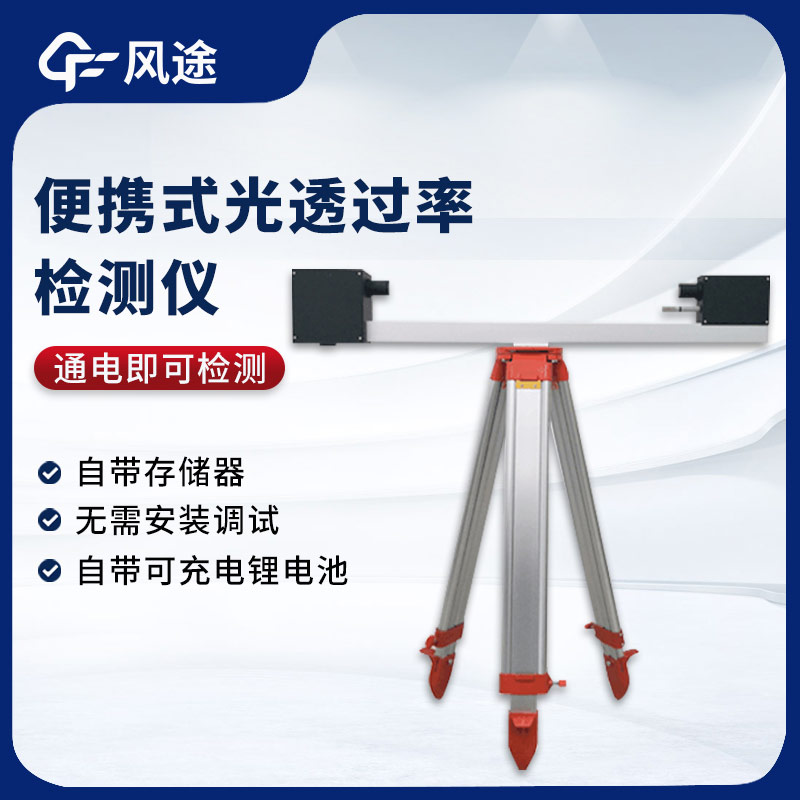Shandong Fengtu IOT Technology Co., Ltd
Sales Manager:Ms. Emily Wang
Cel,Whatsapp,Wechat:+86 15898932201
Email:info@fengtutec.com
Add:No. 155 Optoelectronic Industry Accelerator, Gaoxin District, Weifang, Shandong, China

Sales Manager:Ms. Emily Wang
Cel,Whatsapp,Wechat:+86 15898932201
Email:info@fengtutec.com
Add:No. 155 Optoelectronic Industry Accelerator, Gaoxin District, Weifang, Shandong, China
time:2024-11-19 09:00:29 source:Weather Station viewed:413 time
Atmospheric transmittance refers to the ratio of the luminous flux that passes through the atmosphere to the incident luminous flux when light propagates in the atmosphere. When the atmospheric transmittance is high, it means that more light can successfully propagate in the atmosphere. In this case, the light reflected or emitted by distant objects can relatively easily pass through the atmosphere and reach the observer's eyes, so the visibility is high. For example, under clear, dry, and good air - quality weather conditions, there are fewer interfering factors such as particulate matter and water vapor in the atmosphere, and the atmospheric transmittance is relatively high. People can clearly see distant mountains, buildings, etc., and the visibility can reach several kilometers or even farther.
Conversely, when the atmospheric transmittance is low, the propagation of light in the atmosphere is greatly hindered. This may be due to the presence of a large amount of dust, smoke, thick fog in the atmosphere, or water vapor condensation caused by a high - humidity environment. These factors can cause light to be scattered and absorbed, reducing the amount of light reaching the observer's eyes. For example, in thick foggy weather, tiny water droplets cause the atmospheric transmittance to drop sharply. Most of the light is scattered, and only a small amount of light can propagate in the original direction, resulting in very low visibility, which may be only a few tens of meters or even lower.
In general, the higher the atmospheric transmittance, the higher the visibility; the lower the atmospheric transmittance, the lower the visibility. The two show a positive correlation. This relationship is of great significance for many fields such as meteorology and transportation. For example, in aviation and navigation, pilots and sailors need to judge the navigation safety according to the visibility, and the visibility is closely related to the atmospheric transmittance. Therefore, accurately measuring and understanding the relationship between the two helps to ensure the safety of various transportation modes.
The Light Transmittance Meter is a practical measuring tool. It has various functions and can accurately measure the atmospheric light transmittance, providing a basis for studying atmospheric transparency and the situation of how light propagation is affected by air quality. It can calculate the visibility based on the light transmittance, which is of great significance for transportation fields such as highways, aviation, and navigation, and helps relevant departments implement safety measures and traffic control. It can also detect environmental parameters such as smoke concentration, CO concentration, temperature, and humidity in tunnels to ensure the safe operation of tunnels.
It is easy to operate. The portable design makes it convenient to be carried to various places for measurement. It can start detection once powered on, and the LCD screen displays data in real - time. It has excellent data processing and storage capabilities, can automatically save data, and can be easily exported to a computer and stored in formats such as EXCEL.
It has high measurement accuracy. Based on the principle of light transmission, the sensor and algorithm are precise, and the test error is low. It has strong environmental adaptability and can work stably and accurately within a temperature range of - 40 °C to 80 °C and a humidity range of 0 - 100% RH.

Rainwater online monitoring system can effectively monitor the rainfall situation in real time, and also has data storage and analysis functions, which plays a very important role in rainfall warning and flood prediction. Windway Technology is a manufacturer of rainwater online monitoring system, pr...
Micrometeorology refers to small-scale climatic features in the near-surface atmosphere and soil that are triggered by specific configurations of the subsurface. These features are usually reflected in individual meteorological values or individual weather phenomena (e.g. wind, rain, fog, frost, etc...
The goal of high yields in agricultural cultivation requires an in-depth understanding of the growing environment of crops, and monitoring plays a crucial role in this process. Through accurate monitoring, we can gain a detailed understanding of the growth habits of crops, including their needs for...
With the rapid improvement of China's industrial level, the proportion of petroleum and by-products in industrial production is increasing, and the construction of reserve oil depots in China is becoming more and more intensive, putting forward higher requirements for the performance of oil tank...